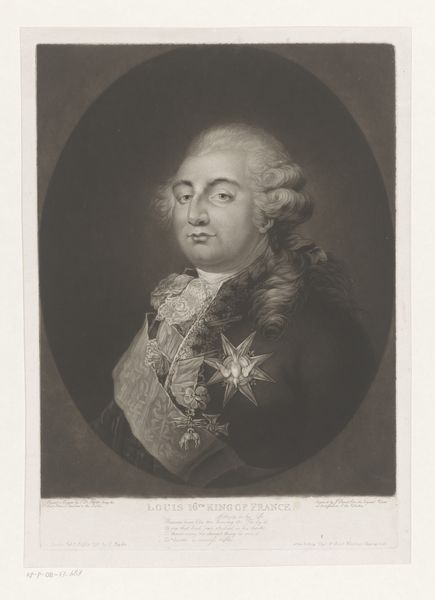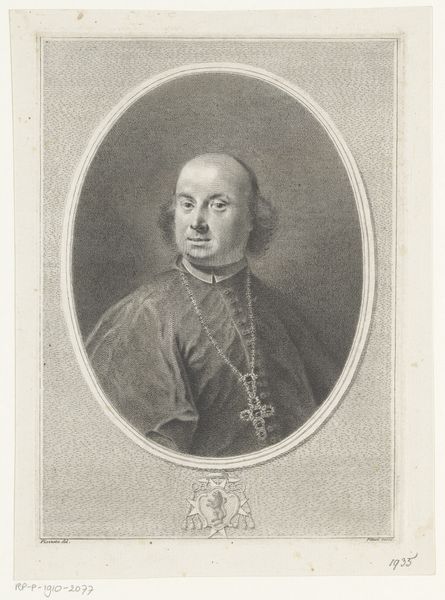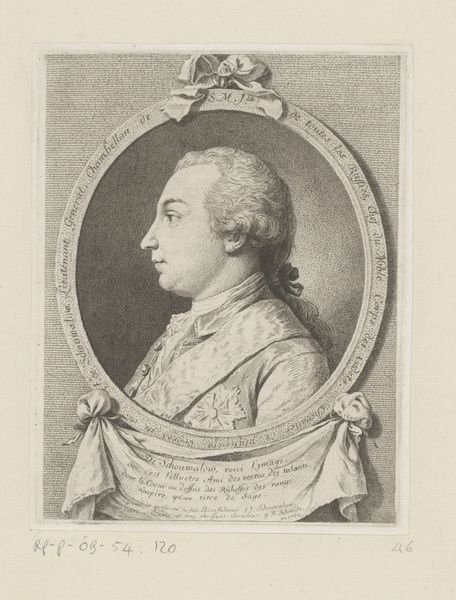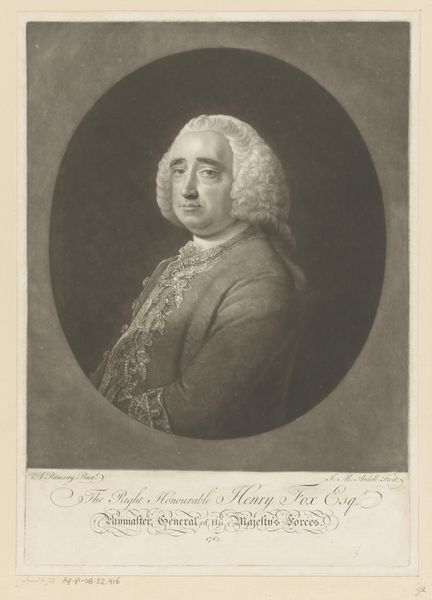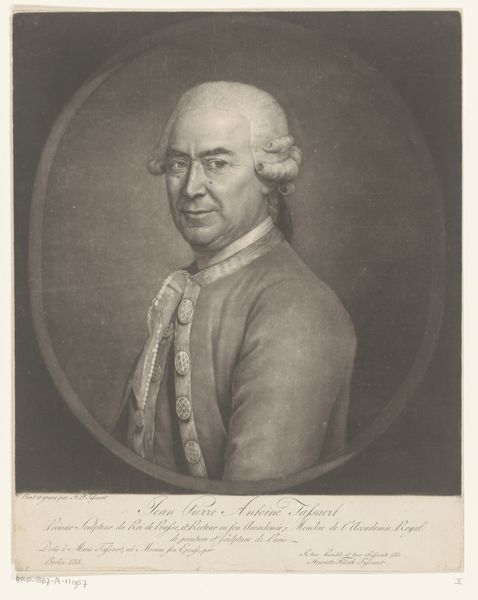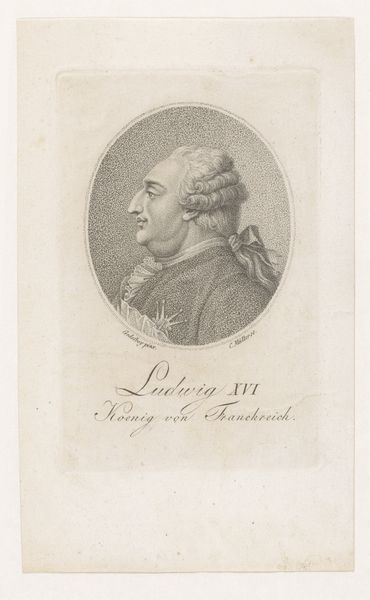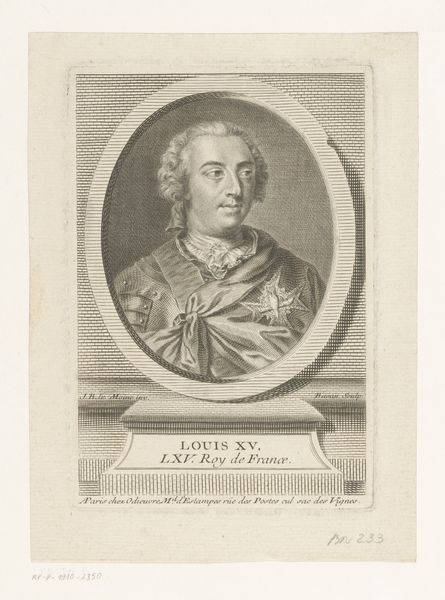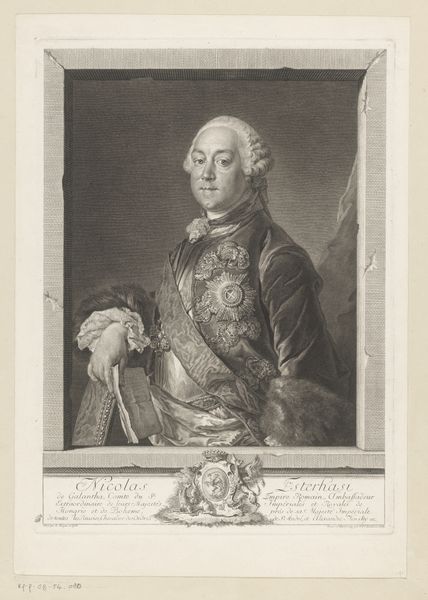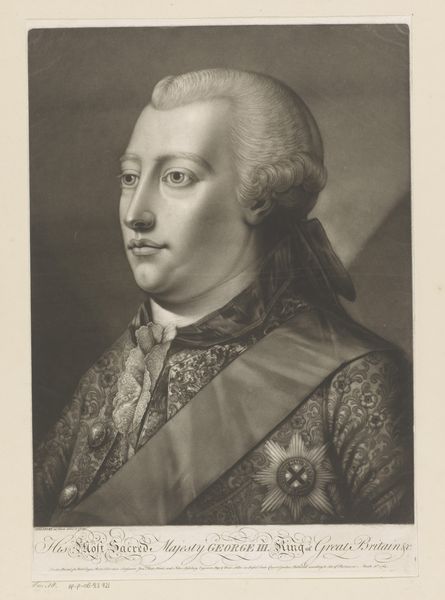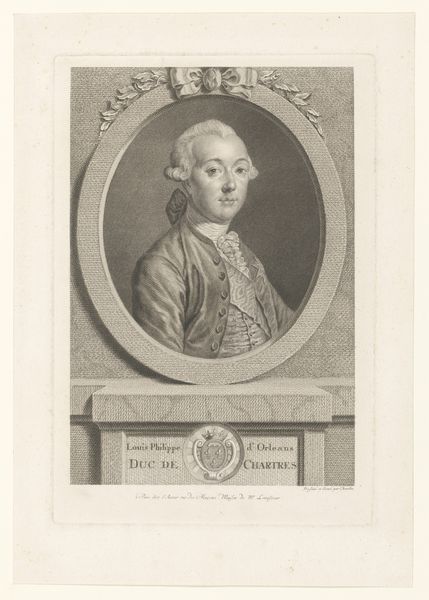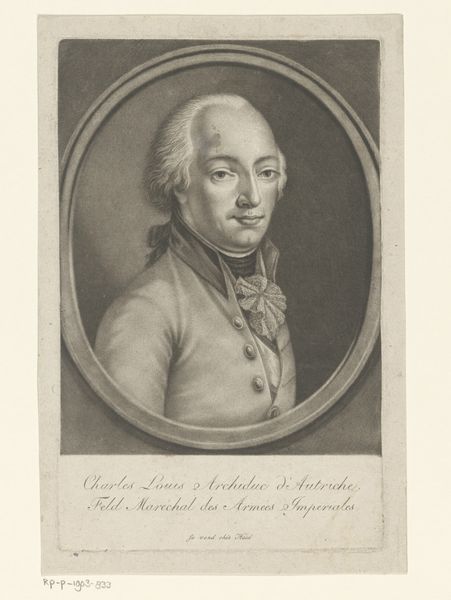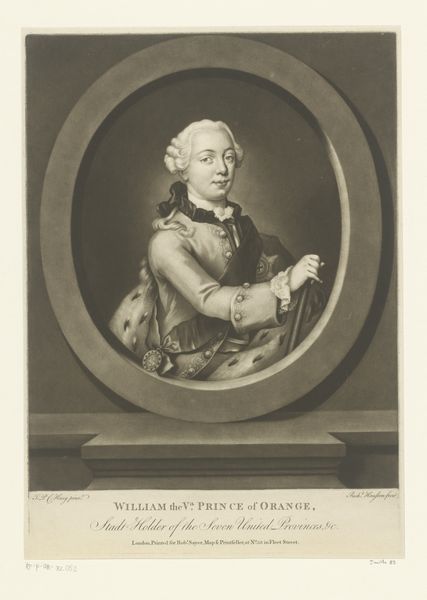
Dimensions: height 230 mm, width 177 mm
Copyright: Rijks Museum: Open Domain
François Xavier Vispré produced this portrait of Louis Philippe, Duke of Chartres, sometime before 1790. It’s a drawing on paper, made in France, representing a member of the French aristocracy. The portrait is interesting for what it tells us about the role of imagery in the late eighteenth century. By this time, the French court had a long history of self-representation through portraiture, and the drawing here is quite conventional in many ways, showing the Duke in an oval frame, richly dressed and coiffed. But we should remember that this was a time of social upheaval, and the French revolution would soon challenge the very idea of monarchy. The image, therefore, can be seen as an assertion of aristocratic privilege at a time when such privilege was under threat. To understand this better, historians might look at contemporary sources: newspapers and pamphlets, but also things like fashion plates and satirical cartoons. The meaning of an image is always contingent on its social and institutional context.
Comments
No comments
Be the first to comment and join the conversation on the ultimate creative platform.
